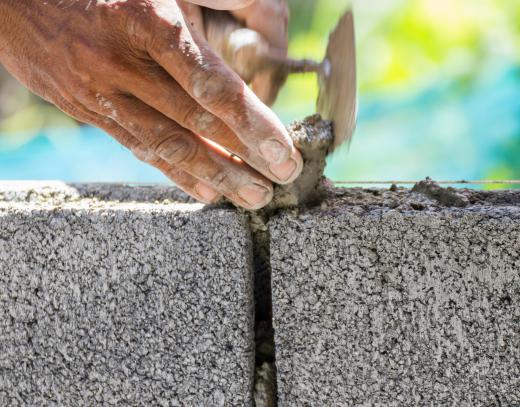Unlike traditional stucco, which is non-insulating and typically comprised of Portland Cement, sand, and water, synthetic stucco is really not stucco at all. Synthetic stucco generally refers to a type of Exterior Insulation Finishing System (EIFS), a insulating wall coating that may consist of more than one synthetic layer and foam insulation. It is often used as a facade on a building’s exterior walls in place of cement stucco because it may be more quickly and easily applied. One example is known as one-coat stucco, a synthetic stucco applied as one coat or layer, where traditional stucco is usually applied in three layers. This may suit a wide range of function and design for both structural and decorative needs.
The installation of this EIFS may be an on-site renovation overseen by plaster professionals, or the synthetic stucco may be pre-fabricated into panels and then shipped to the installation site. With the use of adhesives, the stucco is then applied to what is known as the substrate. Common substrates may include new or existing concrete, cinder block, brick, plywood, and other common building materials. It may also be applied to paper or wire mesh over a wood frame or other material for use on various interior and exterior projects.

A Barrier EIFS, probably the most common and basic EIFS, is comprised of three layers. The "foam" layer, usually foam plastic insulation in the shape of 2 foot x 4 foot (0.6 m x 1.2 m) sheets, is first applied using an adhesive. The base coat, a reinforced layer usually comprised of fiberglass mesh embedded in adhesive, is then applied to the insulating layer. The finish, or topcoat, may then be applied, with a trowel or by spraying, to create an array of stucco-like textures and colors. Aside from synthetic stucco, the EIFS finish may also be made to resemble granite or brick-like textures.

Moisture retention is one possible concern when installing synthetic stucco or any type of EIFS, particularly for wooden structures where water runoff may become trapped between the existing wood and the synthetic layers. An EIFS with Drainage was created to help resolve this issue. Prior to installing an EIFS like synthetic stucco, a water-resistant barrier (WRB) or moisture-wicking membrane may be installed on any wooden substrate. In addition, a drainage cavity is usually created to allow for water dispersal and to ensure the wooden structures experience little or no water damage. This type of EIFS is often required by building codes for structures that contain wood substrates.

